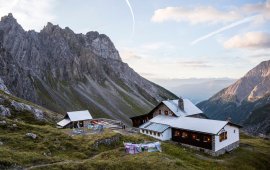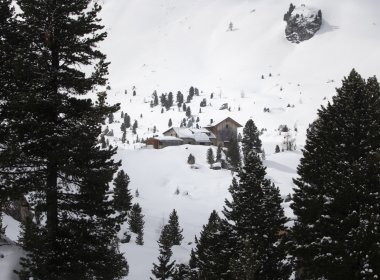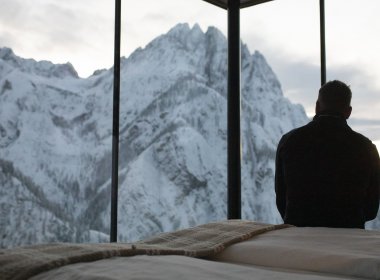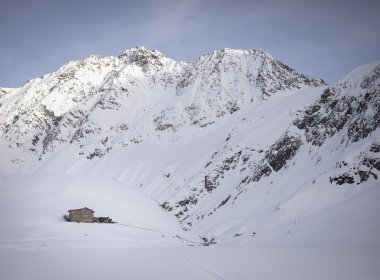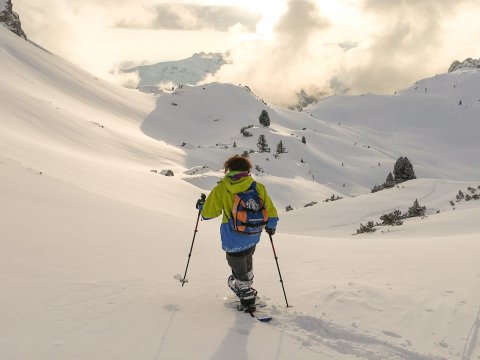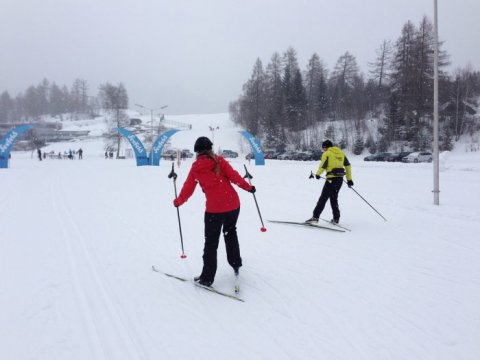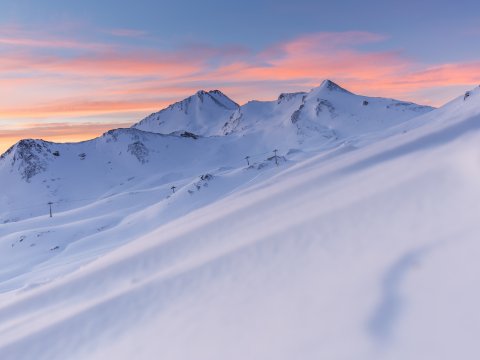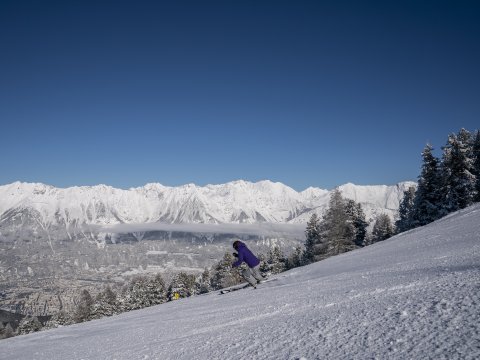Mountain Huts in Tirol Open in Winter
These mountain huts in Tirol are open in winter – an excellent base for ski touring, winter walking and tobogganing. They can be accessed on skis, but in many cases also on snowshoes or simply with a sturdy pair of hiking boots.
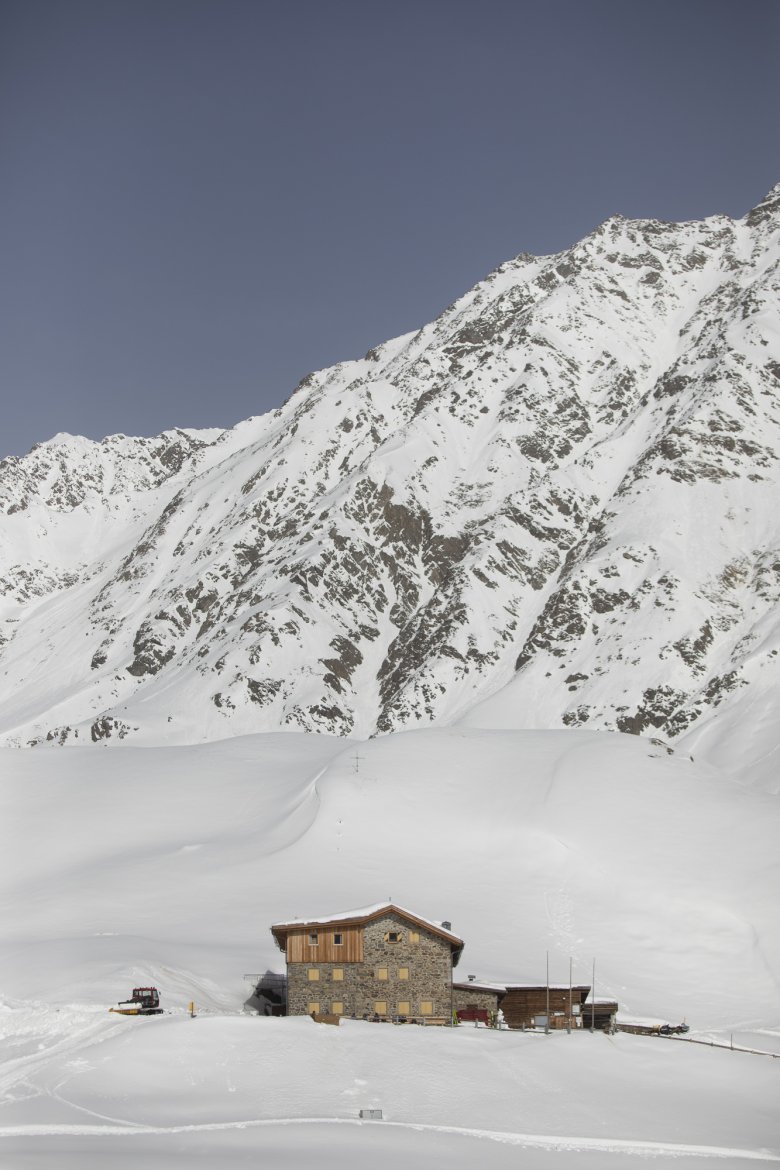
This article is designed as a guide to the many mountains huts in Tirol that can either be visited for the day or serve as accommodation for adventurers ski touring through the Alps for several days. While some huts are already open in late December and January, most do not open until February – and some, especially those at high altitude, even a little later in the season. We recommend checking the website or calling the owner of the hut if you are planning on visiting to make sure the opening hours we have provided here are still correct.
Please also be aware that mountain terrain can be dangerous. This includes the risk of avalanches. Before you set off in winter, make sure you consult the latest avalanche risk report. If in doubt, call the hut and ask if it is safe to come. All activities which take place away from controlled pistes should be carried out with the basic avalanche safety equipment (beacon, shovel and probe). Don't just take it with you – make sure you also know how to use it. Avalanche safety courses are run throughout Tirol by the Austrian Alpine Club.
Kitzbühel Alps and Kaiser Mountains
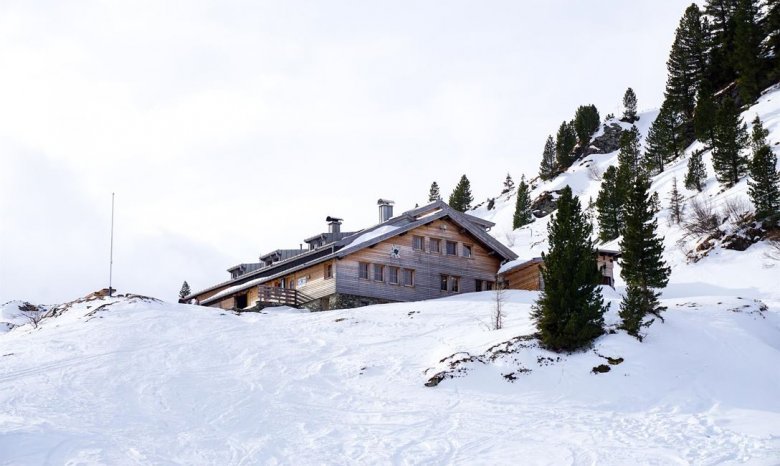
While the area west of Kitzbühel and east of Fieberbrunn is dominated by one of the largest ski resorts in Austria, the terrain east of the Jochbergtal Valley is untouched by ski lifts and piste groomers and therefore ideal for ski touring. There are two huts in the area, the Bochumer Hütte and the Hochwildalmhütte, while the Neue Bamberger Hütte is a third place in the mountains offering food and accommodation. Thanks to their more gentle and rolling profile compared with the steep, craggy peaks further west, the Kitzbühel Alps are ideal for those new to the sport of ski touring as well as those who like to take it easy. Few of the mountains which can be reached on skis are much higher than 2,000 metres. That also means they are good for a one-day adventure. The Kaiser Mountains, on the other hand, are of a more challenging topography. This makes them particularly attractive for multi-day adventures from hut to hut and peak to peak. The summits here are also a challenge in summer and therefore very much for experts only.
- Neue Bamberger Hütte, 1,756m (26.12.2023 until 01.04.2024)
- Bochumer Hütte, 1,432m (07.12.2023 until 31.03.2024)
- Vorderkaiserfeldenhütte, 1,384m (open all year, closed for holiday until 23.01.2024)
Karwendel and Rofan Mountains
These two alpine massifs may be located next to each other, but in winter they offer very different experiences. The relatively small Rofan Massif is easily accessible by cable car leading up to a hut (Erfurter Hütte) offering food and accommodation. The area around the hut is particularly good for snowshoeing. The Karwendel Massif, on the other hand, is more rugged. It has just one hut open in winter, the Pleisenhütte. This is good as a base for ski tours to the surrounding peaks, including the Pleisenspitze. The rest of the Karwendel Mountains are more or less untouched by human hand and therefore for experienced mountaineers only, especially in winter.
- Erfurter Hütte, 1,834m (Christmas 2023 until Easter 2024)
- Pleisenhütte, 1,757m (open on weekends from mid-November)
Tux Alps and Zillertal Valley
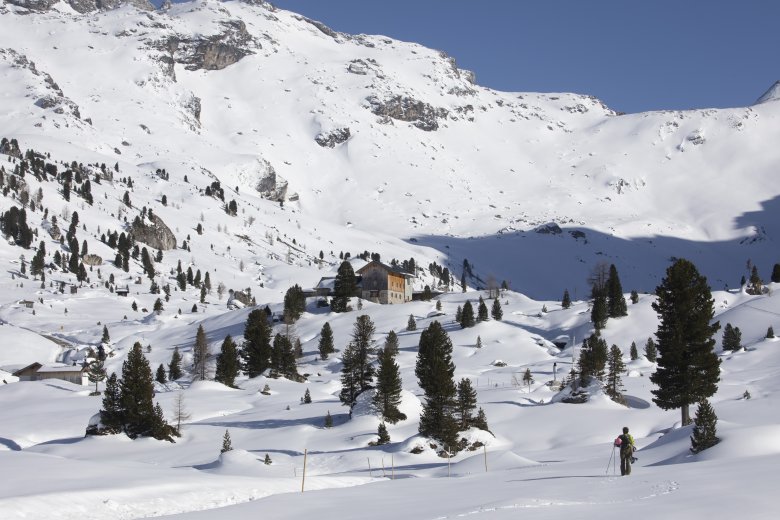
The Tux Alps branch off from the main Inn Valley crossing Tirol from east to west. They are home to several huts open in winter, most of which open their doors early in the season. Many of the ski tours in the region are quite easy, which also means they also tend to get pretty busy. Those spending a few days or more in this region can stay at the Lizumer Hütte or one of the other local huts. The Zillertal Valley, which also splits off the Inn Valley, has lots of smaller side valleys known as "Gründe". The downside is that there you often have a long, flat walk along the valley floor before you get to steeper terrain. On the other hand, this means there are far fewer people than in some other, more accessible areas. Therefore, those willing to "earn their turns" with a long walk will be pleasantly surprised by the range of peaks on offer at the end of each side valley.
- Lizumer Hütte, 2,019m (27.12.2023 until 07.04.2024)
- Glungezer Hütte, 2,610m (25.12.2023 until 07.04.2024)
- Weidener Hütte 1,799m (26.12.2023 until mid-April)
- Meißner Haus, 1,707m (26.12.2023 until 31.03.2024)
- Rastkogelhütte, 2,124m (27.12.2023 until early-April 2024)
- Höllensteinhütte, 1,740m (open from mid-December)
Stubai Alps
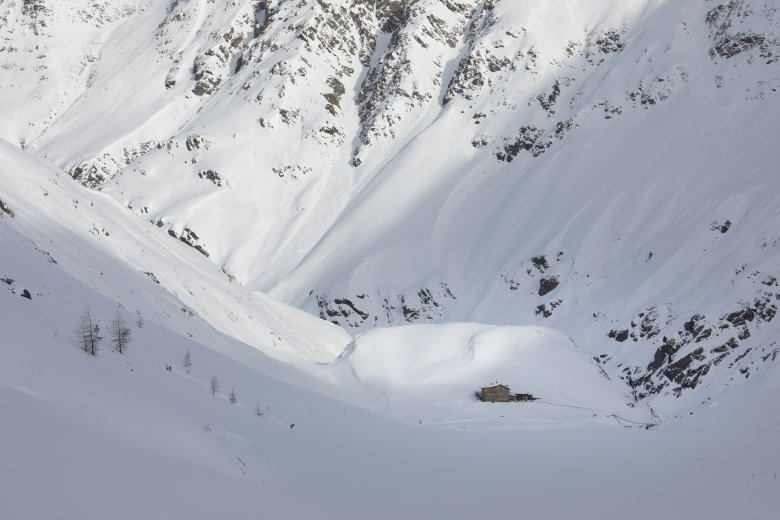
The Stubai Valley is a haven for ski touring, home to countless mountains over 2,000 metres high as well as plenty of huts. The Stubai Alps are to be found south of the Inn river and stretch all the way from the Brenner Pass on the Austrian-Italian border to the Ötztal Valley in the west. They offer excellent ski touring from early winter through until late spring. Some of the huts, such as the charming Amberger Hütte, also have a toboggan run. The large number of huts here makes the region excellent for experienced skiers wishing to embark on a winter adventure from hut to hut. Indeed, a number of these hut-to-hut routes such the one across the Sellrain Valley's mountains (known as the "Orient Express") have for decades now hosted races to see who is the fastest from start to finish.
- Winnebachseehütte, 2,372m (09.02. until 21.04.2024)
- Amberger Hütte, 2,135m (26.12. until 02.01.2024 and 02.02. until 01.05.2024)
- Franz-Senn-Hütte, 2,147m (mid-February until end of April, depending on snow cover)
- Potsdamer Hütte, 2,009m (29.12.2023 until 14.04.2024)
- Neue Pforzheimer Hütte, 2,308m (mid-Februrary until late April)
- Schweinfurter Hütte, 2,028m (26.12.2023 until early-Januar 2024; and mid-February until mid/end-April)
- Westfalenhaus, 2.273m (27.01. until 20.04.2024)
Ötztal Alps
What the Wallis Alps in Switzerland are to the Western Alps, the Ötztal Alps in Tirol are to the Eastern Alps – high, mighty, cragged, imposing. Some are even capped by icy glaciers. There is some good early-season touring in the side valleys, but the Ötztal Alps are first and foremost a place for mid-winter and late-winter alpine adventures. The higher huts even make it possible to enjoy ski touring well into May, when down in the valley the flowers are already blooming. The Ötztal Valley is also home to the Vent Loop, the most famous multi-day ski tour in Tirol. The Ötztal Alps also encompass the Pitztal Valley and the Kaunertal Valley, which do not have any classic winter huts of their own but are home to plenty of mountains which can be explored in skis.
- Hochjochhospiz, 2,412m (02.03. until 24.04.2024)
- Langtalereckhütte, 2,450m (20.02. until 20.05.2024)
- Vernagthütte, 2,755m (early March until mid-May)
- Martin-Busch-Hütte, 2,501m (early March until mid-May)
- Rifflseehütte, 2,293m (late December until early April)
- Gepatschhaus, 1,928m (for opening times visit www.gepatschhaus.at)
Silvretta Mountains
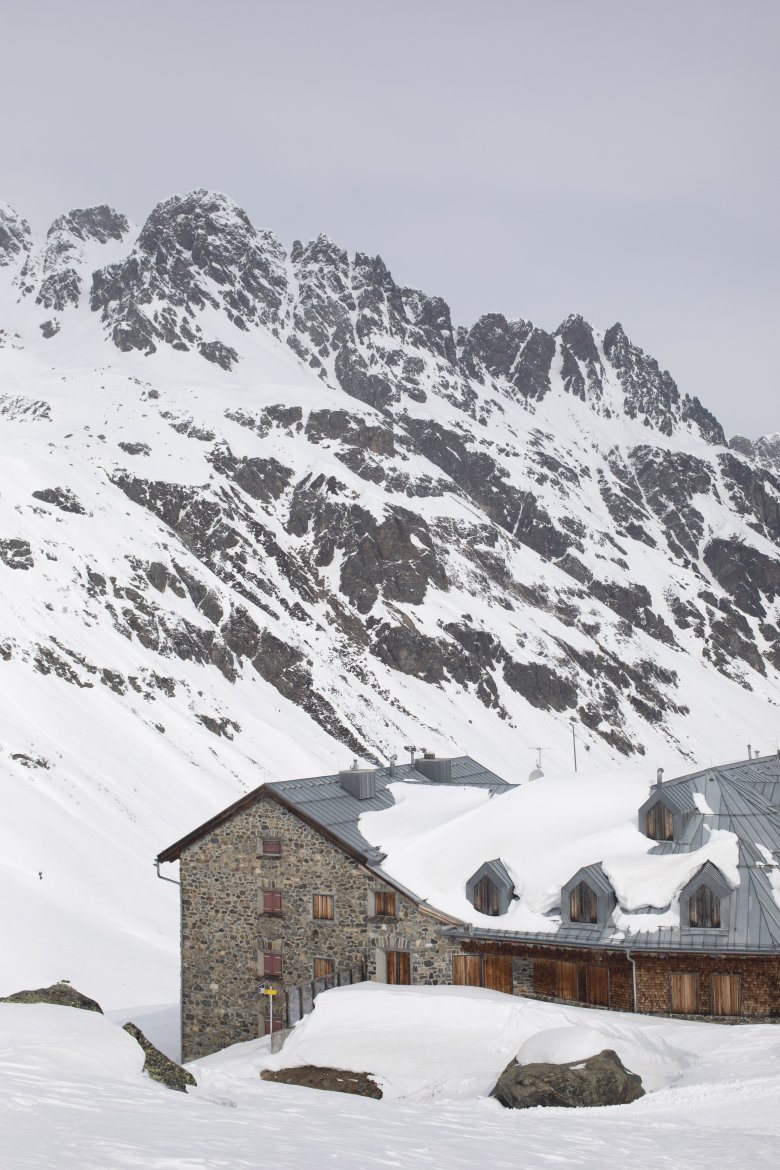
Many mountains, few resorts – the perfect formula for ski touring. That is what you will find in the Silvretta Mountains, an alpine massif straddling the border region between Tirol, the neighbouring Austrian province of Vorarlberg and the Swiss canton of Graubünden. It has been popular with ski-touring enthusiasts for many decades. The most famous mountains in this area include the Piz Buin. There is also good late-season touring from hut to hut. One of the most well-known of these huts can be found in Tirol: the Jamtalhütte.
- Jamtalhütte, 2,165m (15.02. until mid-may 2024)
- Heidelberger Hütte, 2,264m (25.12. until late April 2024)
East Tirol

East Tirol and its Hohe Tauern Mountains are home to Austria's highest peak, the Großglockner. In winter it is best approached from the south, which means from East Tirol (confusing, right?), rather than from the north, which is over the border in the neighbouring province of Salzburg. The Großglockner is part of the Glockner Massif, accessible in winter via the Virgental Valley where there are several huts open in winter. The other main chain of mountains in East Tirol are the Lienz Dolomites in the south of the region. There you will find a number of easy as well as a number of challenging ski tours, all of which are possible in early winter. In the heart of these mountains lies the Dolomitenhütte, one of the most spectacular huts in East Tirol.
- Johannishütte, 2,121m (07.03. until 05.05.2024)
- Essener-Rostocker-Hütte, 2,208 m (early March until mid-May)
- Neue Prager Hütte, 2,796m (mid-March until mid-April)
- Stüdlhütte, 2,801m (early March until mid-May)
- Dolomitenhütte, 1,616m (open all year round)
- Glorerhütte, 2.642m (self-accommodation winter room available)
High and Mighty: The Winter Huts of Tirol
Tradition, seclusion and the power of nature. This series takes a look at the most beautiful winter huts in the mountains of Tirol.









